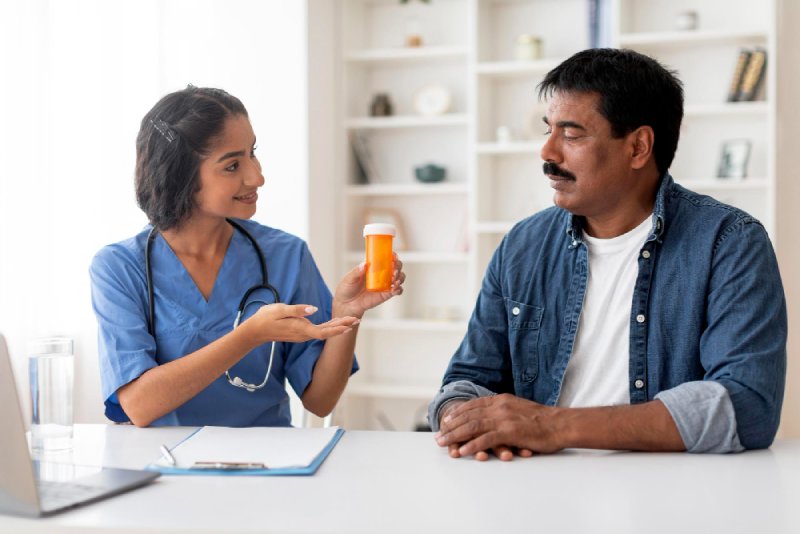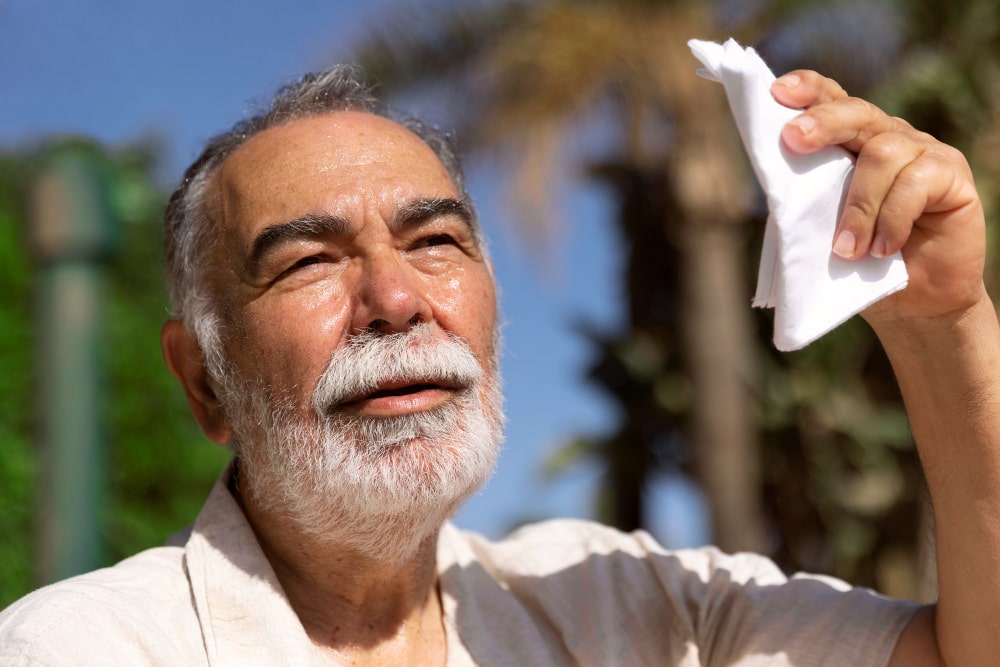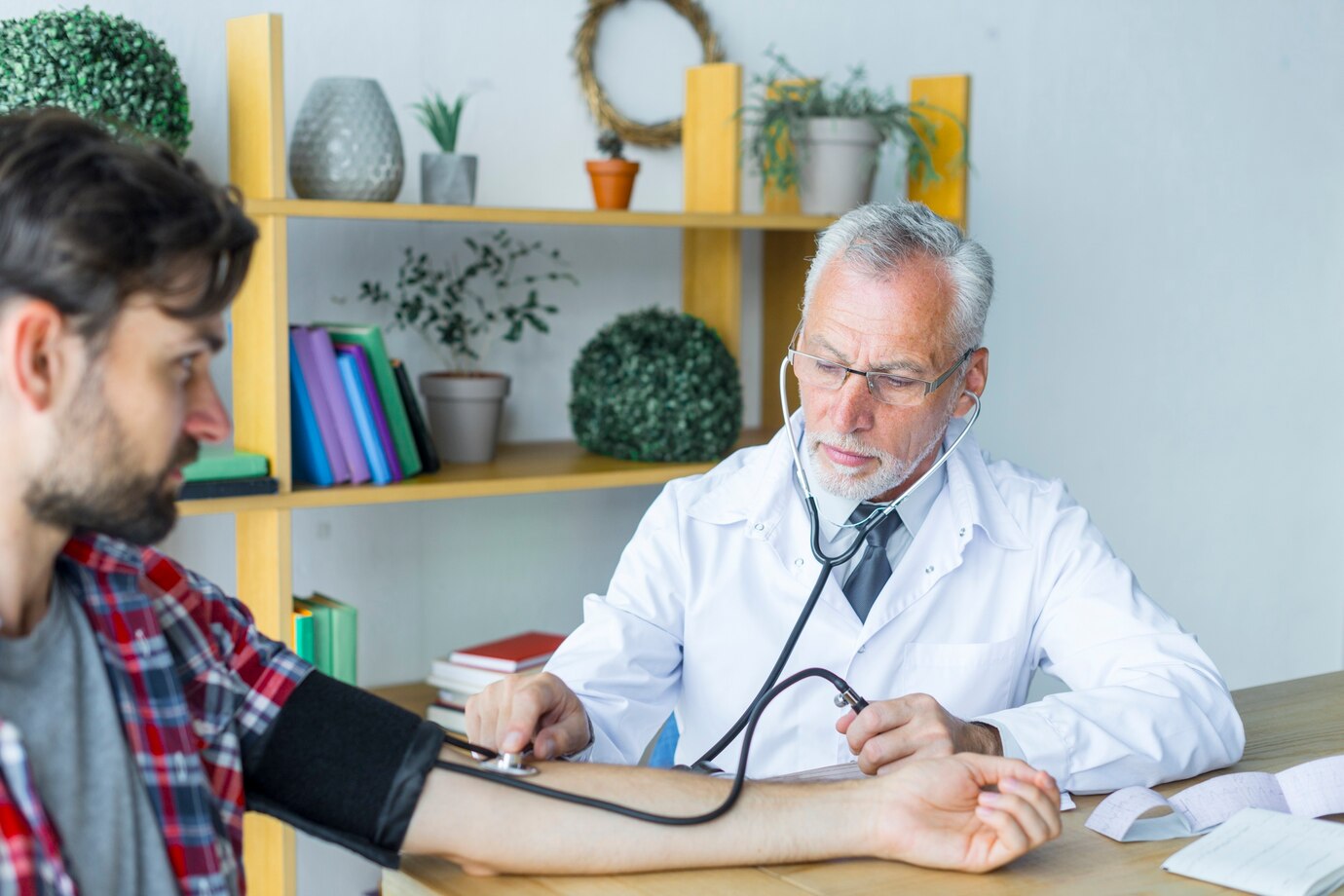Book on Whatsapp
9892101616
Heart Stroke: Symptoms and Life-Saving Actions You Should Take
Heart
Fri Sep 29 2023
Heart stroke, a cardiovascular accident, is a life-threatening medical condition requiring immediate attention. It occurs when blood flow to a part of the heart is interrupted or severely reduced resulting in the deprivation of oxygen and nutrients to heart cells. A heart stroke can have devastating consequences if not recognized and treated promptly. In this blog, we will explore the symptoms associated with heart stroke and the life-saving actions that everyone should be aware of. Let’s first dive into the Stroke Symptoms section.
Understanding the Heart Stroke Symptoms:
Recognizing the warning signs of a heart stroke is crucial for timely intervention. The symptoms of a heart stroke can vary depending on the part of the brain affected. Common signs and symptoms include:
Heart Stroke Symptoms:
- Discomfort or pain in the chest
- Pain or discomfort in the shoulder or arm
- Shortness of breath
- Vomiting, light-headedness, nausea
- Back, neck, or jaw pain
If you or someone around, you experience any of these symptoms it's essential to act immediately.
Before we jump to the crucial Life-saving actions, let’s first get to know about how Heart Stroke is proportionately linked to cardiovascular issues. Increased levels of heat can increase your risk of a stroke such as heart attack and other cardiovascular concerns. Moreover, according to research, the number of deaths caused due to cardiovascular diseases is believed to double or triple when the heat levels of the body reach maximum temperatures. Don’t ignore the Mild Stroke, take it seriously and get diagnosed early.
Now, let’s find out the significant life-saving actions to take during such an emergency situation like a heart stroke.
1. Call Emergency Services: When a heart stroke is suspected it is critical to call emergency services right away. Time is of the essence and dialing the emergency number ensures that professional medical help is on its way.
2. Stay Calm and Reassure the Victim: While waiting for emergency services to arrive it is crucial to stay calm and reassure the victim. This can help reduce anxiety and promote a sense of safety which can be beneficial for their overall well-being.
3. Note the Time of Onset: Make a mental note or write down the exact time when the symptoms started. This information can help medical professionals determine the appropriate treatment options.
4. Do Not Offer Food or Drink: It is essential not to offer the victim any food or drink as swallowing may be difficult due to impaired muscle control. It is safer to wait for medical professionals to assess the situation and make appropriate recommendations.
5. Ensure a Clear Airway: Positioning the victim on their side with their head slightly tilted back can help maintain a clear airway and prevent choking in case of vomiting or saliva buildup.
6. Loosen Restrictive Clothing: If the victim is wearing tight clothing carefully loosen it to enhance their comfort and prevent any restriction in breathing.
7. Stay with the Victim: It's important to stay with the victim until medical professionals arrive to provide reassurance monitor their condition and assist with any sudden deterioration.
Prevention is the Best Medicine:
While immediate actions during a heart stroke are crucial, preventing it from occurring in the first place is even more vital.
1. Adopt a Healthy Lifestyle: Engaging in regular physical activity, eating a balanced diet, maintaining a healthy weight and avoiding smoking and excessive alcohol consumption are key factors in reducing the risk of a heart stroke.
2. Monitor Your Blood Pressure: High blood pressure is a significant risk factor for heart stroke. Regular monitoring and effective management of blood pressure can significantly reduce the likelihood of experiencing a stroke.
3. Manage Chronic Conditions: Conditions such as diabetes, high cholesterol and heart disease should be effectively managed with medical supervision. This includes taking medications as prescribed, attending regular check-ups and following a healthcare professional's advice.
4. Stay Hydrated and Maintain a Healthy Diet: A well-hydrated body and a balanced diet rich in fruits vegetables whole grains and lean proteins can help reduce the risk of cardiovascular diseases.
5. Be Mindful of Stress: Chronic stress can contribute to an increased risk of a heart stroke. Practising stress management techniques such as meditation exercises and seeking support from loved ones can have a positive impact on overall well-being.
A heart stroke is a medical emergency that requires immediate attention. By being aware of the warning signs and taking prompt action lives can be saved and the severity of the stroke can be minimised. Prevention through leading a healthy lifestyle and managing chronic conditions is crucial in reducing the risk of heart stroke. Remember every second counts when it comes to saving a life so stay informed and take action when necessary. You can Check A Few Types Of Heart Tests at Manipal TRUtest from a wide array of health packages along with individual blood tests consisting of Lipid Profile Test, Apolipoprotein Profile, HSCRP, Homocysteine, & and emergency cardiac markers like Trop T, Trop I, NT ProBNP, CPKMB, etc.
Related Tests
Related Packages
Related Blogs

Heart
Why Lipid Testing is Essential for People Over Forty
Turning 40 is a major milestone and a perfect time to start paying closer attention to your heart health. As we age, our bodies undergo numerous physiological changes, many of which can impact our cardiovascular health. One of the most crucial ways to monitor and maintain heart health is through regular lipid testing.
Lipid profile test measures the levels of various fats in the blood, including cholesterol and triglycerides, which are key indicators of cardiovascular risk. It helps detecting early signs of heart disease, stroke risk, and other lifestyle-related conditions.
What a Lipid Test Reveals
A standard lipid test provides comprehensive insight into four key types of fat in your bloodstream:
- Total Cholesterol: The overall level of cholesterol in the blood.
- HDL Cholesterol: The “good” cholesterol that helps remove LDL from the arteries.
- LDL Cholesterol: The “bad” cholesterol that contributes to artery-clogging plaque.
- Triglycerides: A type of fat stored in the body; high levels are linked to heart disease and diabetes.
These results help doctors assess an individual’s risk of cardiovascular issues and make informed decisions regarding lifestyle changes or treatment.
Preventive Health Strategy
Lipid testing plays a crucial role in preventive health care. By identifying abnormal lipid levels before symptoms appear, individuals can take steps to lower their risk through diet, exercise, and if necessary, medication. For those with a family history of heart disease, high blood pressure, diabetes, or obesity, the test serves as a critical tool for early intervention.
Additionally, many people over forty may not experience obvious symptoms of heart disease until it becomes severe. Lipid testing can detect silent risk factors, allowing timely action and potentially saving lives.
Guidelines for Testing
Health experts recommend that adults begin regular lipid testing at age 20, but after 40, it becomes more essential to monitor levels every 1 to 2 years, depending on individual risk factors. If the test results are abnormal or are underlying conditions like hypertension or diabetes, more frequent monitoring may be necessary.
Lipid testing is more than just a routine check-up it is a powerful tool that provides critical insight into your cardiovascular health. For individuals over forty, this simple blood test can be life-saving. It helps identify potential risks early, empowers people to make healthier lifestyle choices, and guides medical treatment if needed.
In a world where heart disease remains a leading cause of death, proactive steps like regular lipid testing can make all the difference in living a longer, healthier life.
Through partners like Manipal TRUtest, reliable testing, analysis, and follow-up become accessible. Don’t wait for symptoms. Recognize the importance of lipid testing and schedule yours today. Your heart will thank you.

Heart
Signs of Heatstroke and How to Prevent It
Summer brings longer days, outdoor fun, and vacations, but it also raises the risk of heat-related illnesses. One of the most serious conditions to watch out for during hot weather is heatstroke. It can happen quickly and needs immediate attention. Knowing the warning signs and learning how to prevent it can help you and your loved ones stay safe during the hotter months.
What is Heatstroke?
Heatstroke occurs when the body’s temperature rises above 104°F (40°C) due to prolonged exposure to high temperatures, especially combined with dehydration. When the body cannot cool itself down effectively through sweating, organs can begin to fail, and it becomes a medical emergency.
Unlike simple heat exhaustion, heatstroke can cause serious harm to the brain, heart, kidneys, and muscles if not treated promptly. It’s important to act fast if you notice symptoms.
Common Signs of Heatstroke
Recognizing the signs early can save lives. The common signs of Heartstroke are :-
1. High Body Temperature
The most noticeable sign is a body temperature above 104°F. If someone feels extremely hot to the touch and appears flushed, it may signal heatstroke.
2. Altered Mental State
Agitation, slurred speech, irritability, seizures, confusion, or even coma are possible signs. Any change in mental function must be taken seriously.
3. Hot and Dry Skin
In classic heatstroke, the skin becomes hot and dry because the body has lost its ability to sweat. In some cases, the skin might feel moist, especially if heatstroke is triggered by intense exercise.
4. Rapid Heartbeat and Breathing
The heart rate speeds up as the body struggles to cool down. Breathing may also become shallow and quick.
5. Nausea and Vomiting
Heatstroke can make a person feel sick, leading to vomiting and stomach discomfort.
6. Headache
A throbbing headache is often one of the first symptoms people notice when their body is overheating.
If you or someone else experiences any of these symptoms, it is crucial to seek medical help immediately.
How to Prevent Heatstroke
Fortunately, heatstroke is largely preventable with some simple steps:
- Stay Hydrated: Drink plenty of water throughout the day, even if you don’t feel thirsty. Avoid excessive intake of alcohol or caffeinated drinks as they can dehydrate you.
- Dress Smart: Wear light-coloured, loose-fitting clothes that allow your body to breathe.
- Avoid Peak Sun Hours: Try to stay indoors between 11 AM and 4 PM, when the sun’s rays are the strongest.
- Use Sunscreen: Protect your skin with a good sunscreen to prevent sunburn, which can affect your body's ability to cool down.
- Take Frequent Breaks: If you are working or exercising outdoors, take regular breaks in the shade or a cool area.
- Eat Light: Heavy meals can increase body temperature. Opt for fruits, vegetables, and foods with high water content during summer.
- Monitor Vulnerable People: Keep an eye on children, the elderly, and people with chronic illnesses, as they are at a higher risk.
At manipaltrutest.com, we encourage everyone to stay informed about heat-related illnesses and act quickly if symptoms appear. Early diagnosis and medical attention are key to avoiding serious complications.
Heatstroke is dangerous but can be preventedby staying hydrated, dressing appropriately, and avoiding overexposure to heat. . Always be vigil to your body’s signals and seek help if something feels wrong. For more health tips, visit manipaltrutest.com

Heart
How a Cholesterol Test Can Help You Prevent Heart Disease
The article will discuss the significance of cholesterol testing and how it can help avoid heart disease, improve body metabolism, treat heart disease, regulate blood pressure, and prevent many other diseases. Following the cholesterol test, the doctor will provide the appropriate guidance. They will contain the appropriate exercise and diet that the patient should adhere to.
What is cholesterol
The kind of lipid present in blood. It is mostly made by the liver and is present in a variety of foods, including dairy, meat, and eggs. It is essential to the body because it aids in the formation of cell membranes, hormone production, and easy food digestion. As a result, it is crucial, but occasionally, too much cholesterol can be bad for your health.
- The body contains two types of cholesterol: high-density lipoprotein cholesterol, which lowers heart-related disease and keeps plaque from accumulating in the arteries.
- Low-Density Bad cholesterol is lipoprotein cholesterol. It aids in the elimination of excess cholesterol. The presence of LDL cholesterol hardens the arteries, which eventually causes obstruction and increases heart-related disorders.
- This test includes triglycerides, another type of blood fat. The risk of heart-related disorders is also increased by high HDL and LDL levels.
Importance of Cholesterol Test
The cholesterol test provides a comprehensive view of the cholesterol level, which makes it extremely significant. A balanced diet and regular exercise are essential for good health if cholesterol levels are rising. It will identify possible risks early on. In addition to offering appropriate advice, the medical professionals will first check cholesterol levels and then prescribe medication to assist avoid heart disease.
Why Is a Cholesterol Test Important?
To provide an extensive overview of your heart health, a cholesterol test evaluates these various cholesterol components. The test is essential for identifying possible hazards early because many people with high cholesterol don't exhibit any symptoms. The physician can collaborate to make choices that lower your risk of heart disease by being aware of your cholesterol levels.
The cholesterol test helps in heart disease prevention.
- Early detection of excessive cholesterol can be beneficial in a number of ways, including the prevention of heart-related diseases and easy diagnosis.
- The measurements of HDL, LDL, triglycerides, and total cholesterol will be the first things the doctor wants to see. The doctor will prescribe medicine if the lDl is high since it increases the risk of heat stroke and attack.
- A person's lifestyle should change; for example, frequent exercise and a healthy diet that lowers cholesterol are both necessary. As a result, they must alter their lifestyle.
Conclusion
The article above leads one to the conclusion that the cholesterol test is crucial for overall health. Early illness prevention can be achieved through early detection. In order to help diagnose and reduce the risk of heart-related disease, the doctor will provide accurate information about the patient's cholesterol level as well as appropriate medicine. With the right diet and exercise, many heat-related illnesses will decrease. As a result, cholesterol testing is crucial for disease prevention.
